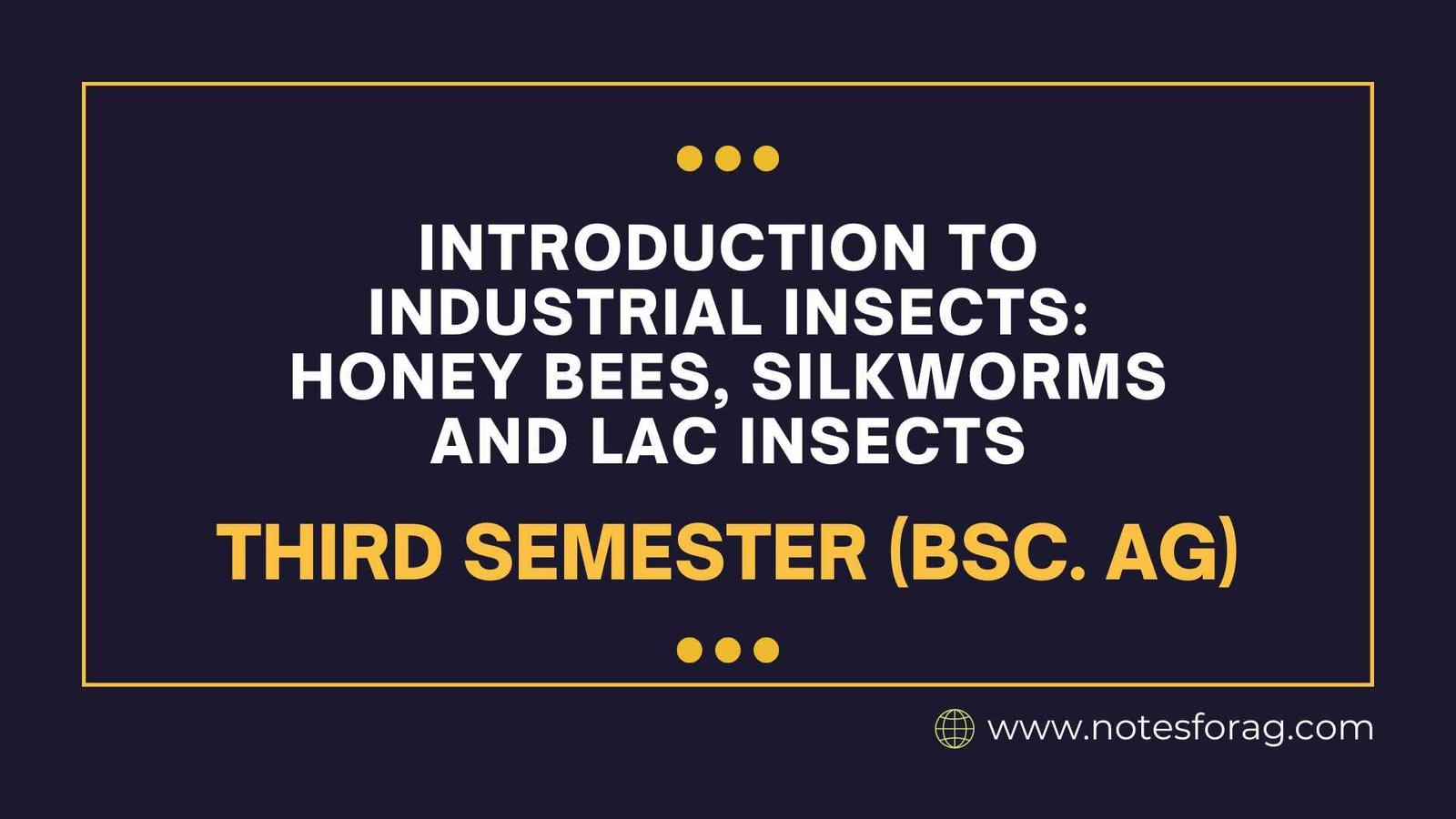Industrial insects such as honey bees, silkworms, and lac insects contribute significantly to a variety of industries by creating useful products. Honey bees are vital for pollination, honey, and beeswax production, which is crucial in agriculture, food, and cosmetics. Silkworms produce silk, a valued natural fiber used in textiles and biotechnology. Lac insects secrete lac, which is refined into shellac for use in wood finishes, food coatings, and cosmetics. These insects help to economic progress while also promoting sustainability and biodiversity.
Table of Contents
Introduction to industrial insects
Industrial insects are species whose actions and products benefit humans economically. Honey bees, silkworms, and lac insects are three of the best-known examples. These industrial insects are employed in a variety of industries, including agriculture, textiles, and cosmetics, due to their ability to create useful compounds.
Honey Bees: The Pollination Powerhouses
Honey bees (Apis mellifera) are amazing insects best known for their vital role in pollination, which has a substantial impact on worldwide agriculture and natural ecosystems. These social organisms form intricate colonies made up of a single queen, worker bees, and drones. Worker bees do a variety of responsibilities, including foraging for nectar and pollen, hive maintenance, and caring for the queen’s young. This complicated social structure enables them to function effectively, ensuring both colony survival and environmental impact.

Economic Importance:
Honey bees are essential for both pollination and honey production. They are highly valuable for producing beeswax and royal jelly.
Product and Uses:
- Honey: A natural sweetener with antimicrobial characteristics that is utilized in food and beverages, cosmetics, and medicine.
- Beeswax: Used in candles, cosmetics, and nail paints.
- Pollination: Bees pollinate various crops, directly adding to agricultural productivity.
- Royal jelly: Used in dietary supplements and skin care items.
Industrial applications:
- Agriculture: Honey bees provide vital pollination services for fruits, vegetables, and nuts.
- Apiculture (beekeeping): Honey and beeswax production is a growing industry around the world.
Silkworms: The Secret of Silk Production
Silkworms, namely the larvae of the Bombyx mori moth, play an important role in silk manufacture, which has piqued human interest for generations. Silkworms’ lifecycle begins with small eggs that develop into larvae or caterpillars. During their development, these larvae feed solely on mulberry leaves, resulting in rapid growth. When they achieve adulthood, they enter the pupal stage by spinning a protective cocoon out of silk threads. This silk is made from a material generated by their salivary glands and may stretch up to a mile in length when fully unraveled.

Economic Importance:
Silkworms are essential to the silk industry. Domesticated silkworms are the principal source of natural silk.
Product and Uses:
- Silk: A high-quality textile fiber recognized for its shine, smooth texture, and strength. Its applications include clothes, upholstery, medical sutures, and cosmetics.
Industrial applications:
- Sericulture (silk farming): Breeding silkworms and gathering silk from their cocoons is an age-old practice, particularly in China, India and Japan.
- Biotechnology: Silkworms are also employed in scientific and genetic studies because their genome is well-mapped.
Lac Insects: Nature’s Lacquer Producers
Lac insects, particularly of the genus Kerria, are fascinating animals that produce lac resin, a natural chemical used in a variety of businesses. These insects are primarily found in Asia’s tropical and subtropical regions, where they thrive in conditions with plenty of sunlight and mild temperatures. Kerria lacca, the most well-known species, lives largely in trees such as banyans and fig trees, where it feeds on sap and excretes a resinous material that hardens when exposed to air.
Economic Importance:
Lac insects generate lac, a sticky secretion that yields shellac, which is widely employed in a variety of industries.
Product and Uses:
- Shellac: Uses include wood finishing, food coatings, cosmetics, and pharmaceuticals.
- Dyes: Lac is also used to create natural dyes for clothing, cosmetics, and food.
- Varnishes: Lac-based solutions are used to create protective coatings and polishes for wood and metals.
Industrial applications:
- Lac cultivation: Lac insects are cultivated on host plants (such as Palas and Kusum) in India, Thailand, and Myanmar.
- Cosmetics and Food Industries: Shellac is used in nail polish, fruit coating, and as a glazing agent for candies and tablets.
Honey bees, silkworms, and lac insects play important roles in a variety of industrial activities, including agricultural, textile manufacture, cosmetics, and pharmaceutical manufacturing. Their products not only benefit the economy, but also promote sustainable practices and biodiversity conservation.
Frequently Asked Questions
What are industrial insects?
Industrial insects are species whose products or activities generate significant economic benefits for humans. Honey bees, silkworms, and lac insects are examples of organisms that contribute to businesses such as agriculture, textiles, and cosmetics.
What is the importance of silkworms in industry?
Silkworms produce silk, which is one of the most valuable natural textiles. Silk is used in clothes, upholstery, and medical sutures, hence silkworms are essential to the textile industry.
Related Articles

